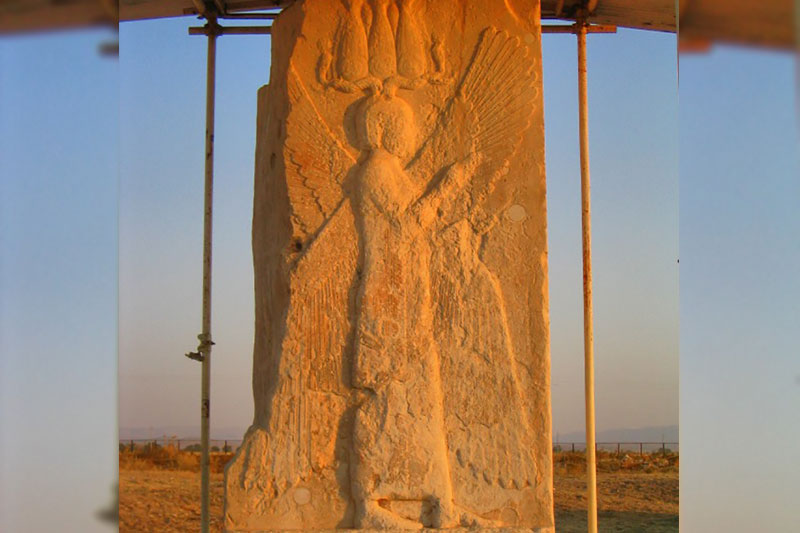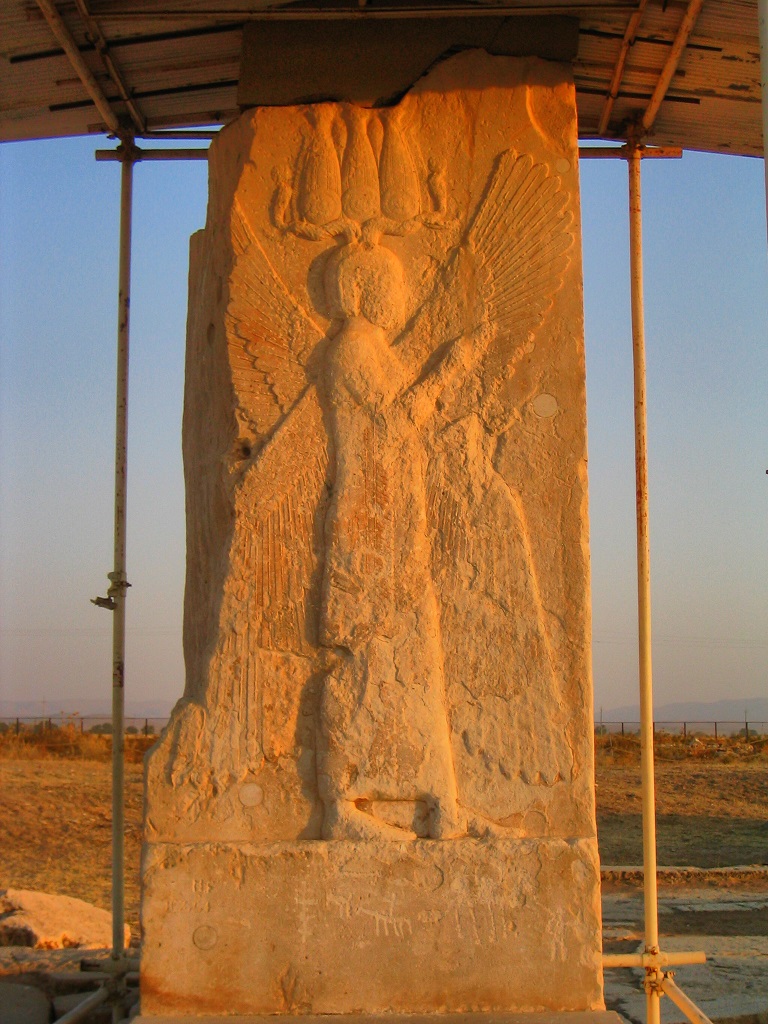The two main doorways leading into and out of Gate R were originally flanked by monumental winged bulls that were closely copied from the lamassu as divine guardians that had once provided divine protection to the gates and doorways of Neo-Assyrian palaces. While they are no longer represented by anything but stone fragments, the many pieces of sculptured hairs and the part of a crown found by Herzfeld in this area, indicate that the bulls of the inner door were human-headed.
The most distinctive feature of the Gate palace is a carved, winged magical guardian genie, three meters high that miraculously survived on one jamb of the small northern doorway. The carving shows a four-winged bearded man wearing a strange crown and a full-length robe that passes over his right arm. The right hand is raised in front of the chest with the fingers fully extended. The left hand is less preserved. The finely modeled feet are bare. Like the great winged bulls, the winged figure is clearly inspired by Assyrian and pre-Achaemenid Persian art and sculpture, yet here we are not dealing with a replica but rather with a recreation of an established tradition with a different concept, stressing the power of the new empire to the viewers. The combination of the figure’s Syro-Phoenician-style with Egyptian crown, Elamite robe, an Ionian rosette border, and Neo-Babylonian stylistic elements, all appear to represent a deliberate attempt to apply and adopt the visual traditions of recently conquered regions in order to create a single, powerful, spiritual and protective image. The trilingual inscriptions which had been above the figure till 1861, translated as “I, Cyrus, the King, an Achaemenian”, clearly asserted that the winged figure was deliberately created as a spiritual symbol of Cyrus the Great just a short time after his death in 530 BC. On the façade of the terrace, numerous stonemasons’ marks confirm a system for division of labor and management that would vanish in the final stages of the work. Many holes which can be seen on the edge of the stone blocks were made by the people, after the fall of the Achaemenids, to reach the valuable iron and lead clamps used to fix and strengthen the stones together.












